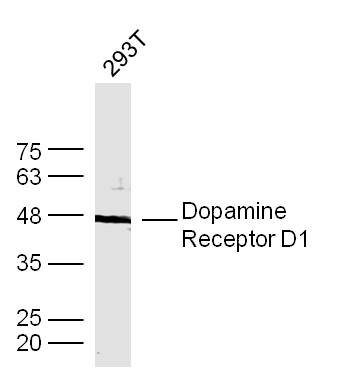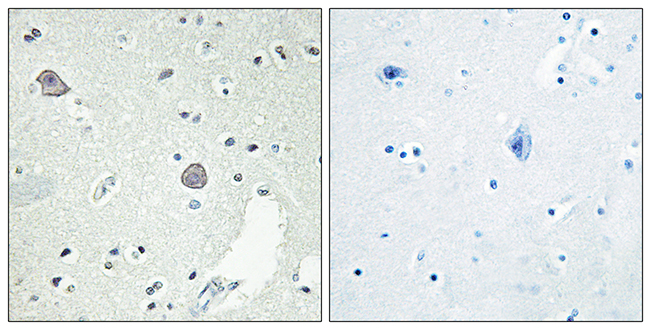Dopamine Receptor D1 antibody [C2C3], C-term
GTX100354
ApplicationsImmunoFluorescence, Western Blot, ImmunoCytoChemistry, ImmunoHistoChemistry, ImmunoHistoChemistry Frozen, ImmunoHistoChemistry Paraffin
Product group Antibodies
TargetDRD1
Overview
- SupplierGeneTex
- Product NameDopamine Receptor D1 antibody [C2C3], C-term
- Delivery Days Customer9
- Application Supplier NoteWB: 1:500-1:3000. ICC/IF: 1:100-1:1000. IHC-P: 1:100-1:1000. IHC-Fr: 1:100-1:1000. *Optimal dilutions/concentrations should be determined by the researcher.Not tested in other applications.
- ApplicationsImmunoFluorescence, Western Blot, ImmunoCytoChemistry, ImmunoHistoChemistry, ImmunoHistoChemistry Frozen, ImmunoHistoChemistry Paraffin
- CertificationResearch Use Only
- ClonalityPolyclonal
- Concentration2 mg/ml
- ConjugateUnconjugated
- Gene ID1812
- Target nameDRD1
- Target descriptiondopamine receptor D1
- Target synonymsD1R, DADR, DRD1A, D(1A) dopamine receptor, dopamine D1 receptor
- HostRabbit
- IsotypeIgG
- Protein IDP21728
- Protein NameD(1A) dopamine receptor
- Scientific DescriptionThis gene encodes the D1 subtype of the dopamine receptor. The D1 subtype is the most abundant dopamine receptor in the central nervous system. This G-protein coupled receptor stimulates adenylyl cyclase and activates cyclic AMP-dependent protein kinases. D1 receptors regulate neuronal growth and development, mediate some behavioral responses, and modulate dopamine receptor D2-mediated events. Alternate transcription initiation sites result in two transcript variants of this gene. [provided by RefSeq]
- Storage Instruction-20°C or -80°C,2°C to 8°C
- UNSPSC12352203
References
- Li H, Sun F, Bai S, et al. The DR1‑CSE/H(2)S system inhibits renal fibrosis by downregulating the ERK1/2 signaling pathway in diabetic mice. Int J Mol Med. 2022,49(1):pii: 7. doi: 10.3892/ijmm.2021.5062.Read this paper
- Tapia E, García-Arroyo F, Silverio O, et al. Mycophenolate mofetil and curcumin provide comparable therapeutic benefit in experimental chronic kidney disease: role of Nrf2-Keap1 and renal dopamine pathways. Free Radic Res. 2016,50(7):781-92. doi: 10.1080/10715762.2016.1174776Read this paper




